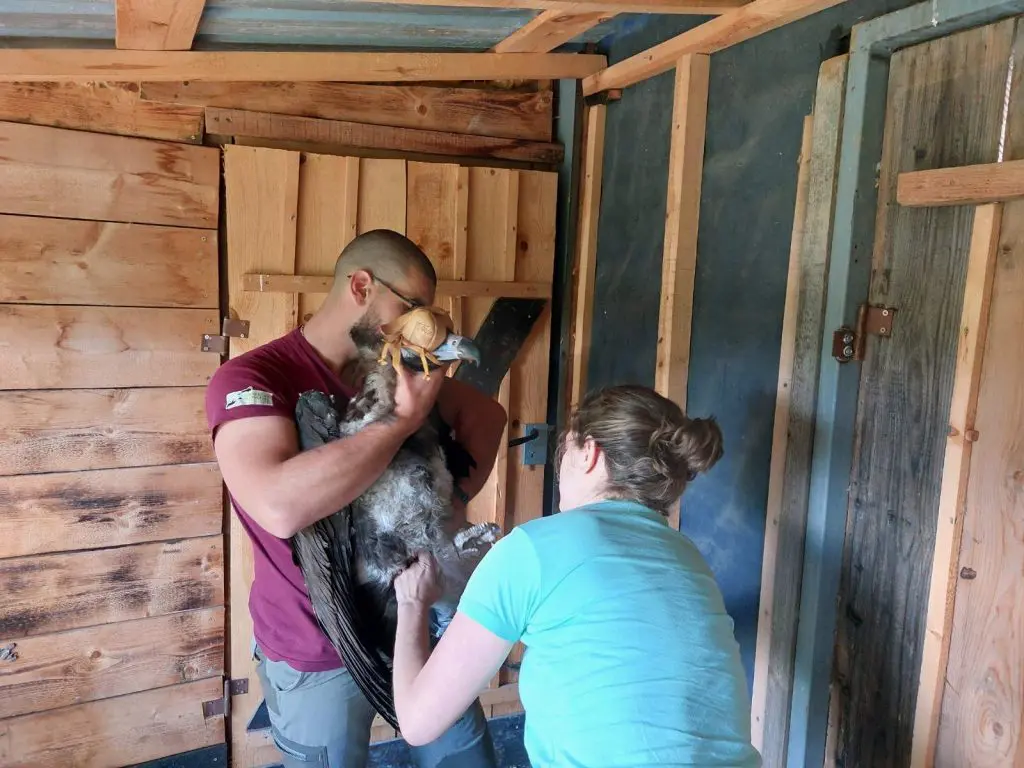
Rarely seen in the Italian skies since they were declared extinct in the country, staff working at a vulture supplementary feeding station just 80km east of Rome were surprised when they spotted a cinereous vulture, Europe’s largest bird of prey, feeding last month.
Alpha
Set-up across the Central Apennines, a network of supplementary feeding stations are part of efforts to support the reintroduced population of Griffon vultures in central Italy. The feeding station at the Monte Velino Reserve is often visited by Griffon vultures not only from Italy but from populations in France, Spain and Croatia, feeding on the livestock carcasses donated from farms and butchers. Set-up at each stations are camera traps to photograph all the visitors, and it was with much delight that staff noticed among the birds feeding a cinereous vulture.
The bird in question was Alpha, an adult female released as part of a reintroduction project in the Verdon Gorge in the south-west French Alps back in 2017. Looking at the birds GPS data, Alpha had traveled extensively around Italy before visiting Monte Velino.

Working to conserve Europe’s largest vulture
With a wingspan of nearly 3m, cinereous vultures are Europe’s largest vulture species. Like the other three species of vultures, the cinereous vulture populations in Europe drastically declined over the course of the 20th Century due to persecution, illegal wildlife poisoning, changes in farming practices and habitat destruction. Once common across much of Europe, today there is a growing population on the Iberian peninsula with around 3,000 breeding pairs, a small reintroduced population in France (35 paiurs), and an isolated population in Greece of around 30 pairs. In Italy the bird was declared extinct in the 1960’s when the last birds disappeared from Sardinia. Since then cinereous vultures like Alpha have been only rare visitors to Italy.

Alpha was released as part of the successful reintroduction programme led by League pour la Protection des Oiseaux (LPO) that started in the early 1990’s in the south-west French Alps,. Between 1992 and 2004 53 individuals were released both from wild origin (from rehabilitation centers in Spain) and also from the Cinereous Vulture Captive Breeding network. There are now more than 30 breeding pairs of cinereous vultures at the three release sites in France, and the species has now been firmly re-established. We here at the Vulture Conservation Foundation have been working with the project to support the release of Spanish birds.
The recent reintroduction of the species in Bulgaria is an important step to increase the range of the species and to connect the European populations in the east and west.
Vultures in Italy
Italy was once home to breeding colonies of all four species of European vultures but over the last century bearded vultures and cinereous vultures were declared extinct, the Egyptian vulture disappeared from much of central and southern Italy and the Griffon vulture was verging on disappearing from the country with just a small population on Sardinia. However, thanks to the dedicated effort of conservation teams, all but the cinereous vulture are breeding across Italy. The bearded vulture has returned to the Italian Alps, Griffon vultures have been reintroduced in several sites and a small population of Egyptian vultures in southern Italy is still hanging on.



